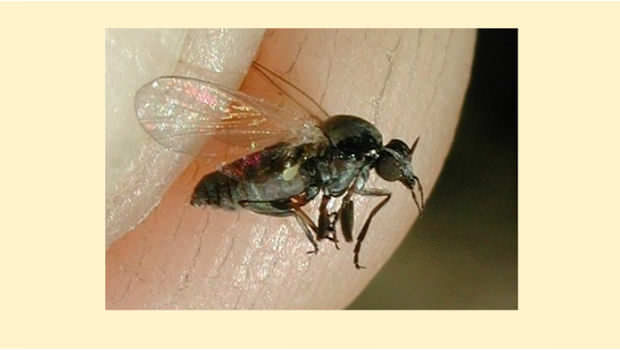Biodiversity Group: The Blandford Fly
WARNING – IT’S THAT TIME OF YEAR AGAIN!
Blandford flies are a species of black fly. They are approximately 2 – 3mm long making them only slightly larger than midges. The females lay their 200 – 300 eggs in the cracks of steep river banks in June and July. These eggs then lie dormant through the winter. In March having become moistened with the higher water levels over the winter, the larvae emerge. Clinging to the riverside plants by hooks on the end of their abdomens and a kind of silk they help to clear the water by filtering out small food particles brought to them by the current. Five weeks later they pupate and in May the adults emerge. They are now on the wing through May, June and July flying close to the ground and ranging approximately 1km from water. Males only feed on nectar but females need a blood meal before they can lay their eggs. Their scissor-like mouth parts cut the skin so they can inject an anaesthetic and suck the blood. In June or July, once her eggs have matured, the female returns to the river to lay them and the cycle begins all over again. Although the females bite domestic, farm and wild animals they do seem to prefer dogs and humans. Although bites tend to be on the lower limbs they can bite anywhere and women seem to be bitten more than men – this may be because skirts leave the lower limbs uncovered.
Did You Know?
- The Blandford Fly got its name from a major outbreak of people being bitten around the town of Blandford Forum in Dorset in the 1960s and 1970s.
- The saliva from the fly often causes severe irritation, pain, swelling, blistering, a high temperature and joint pain with some people needing to seek medical advice.
- Streams and rivers can support vast numbers of blackfly larvae (perhaps 10,000 per square metre of river bed).
Stuart Hine, entomologist at the Natural History Museum, said the growing popularity of water features over the past 10 years has encouraged the insects to migrate from the countryside to towns and cities.

